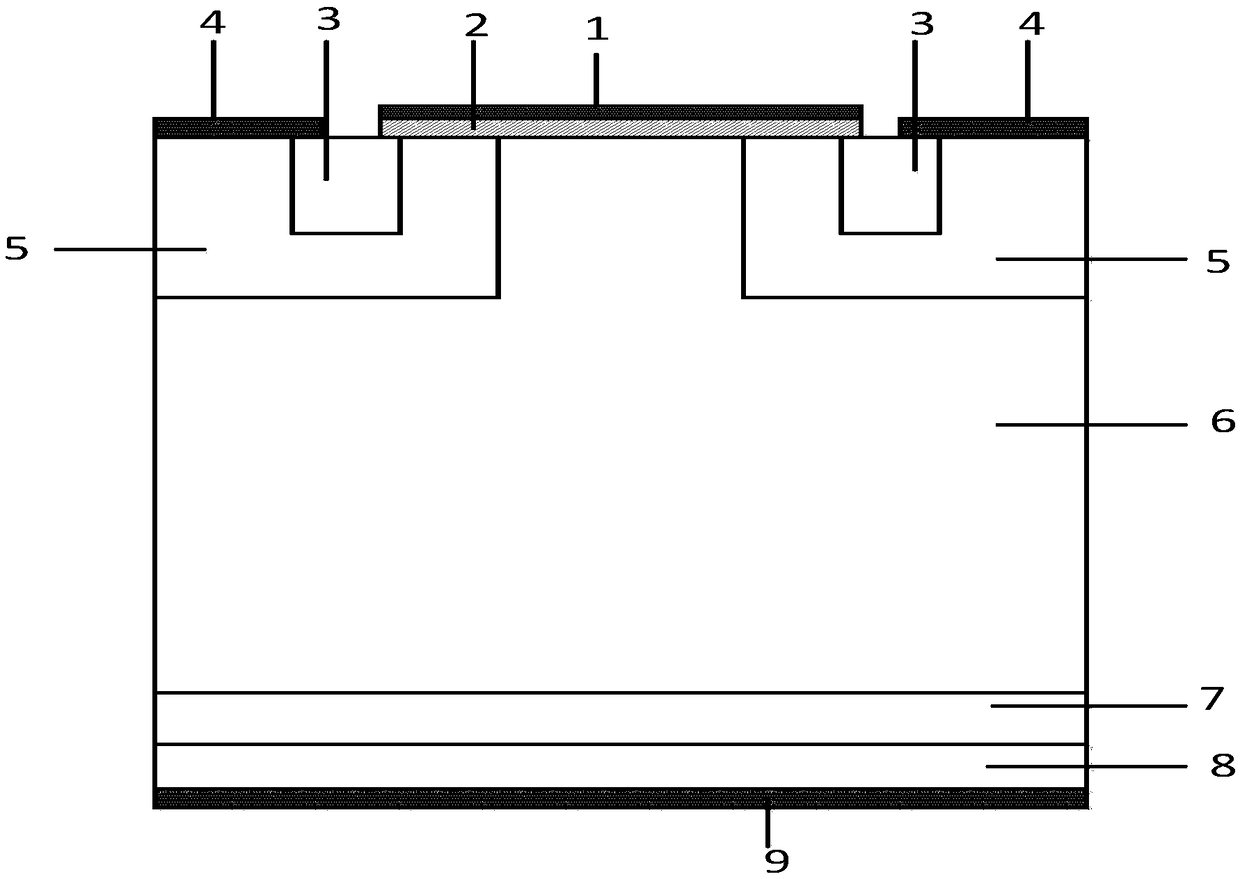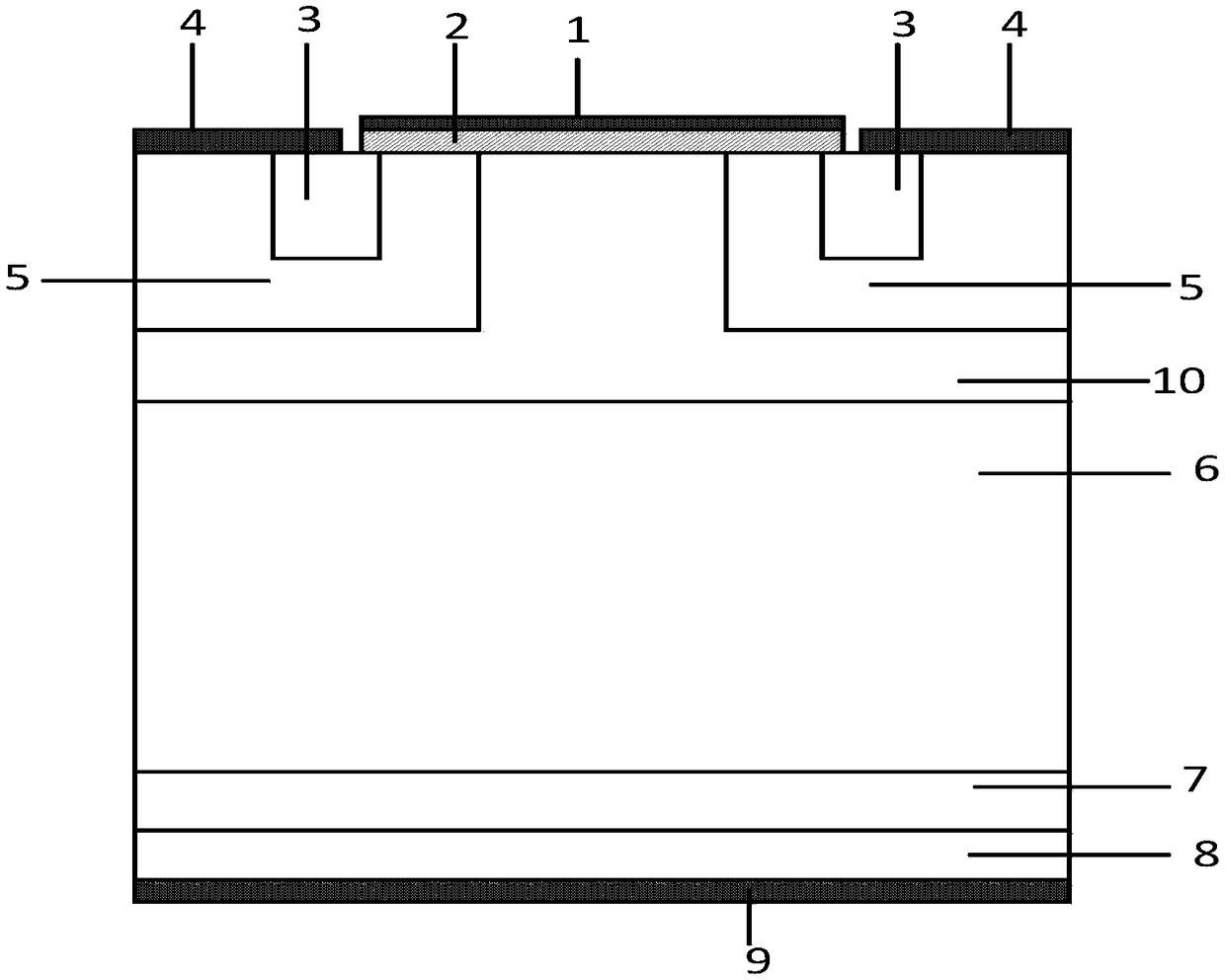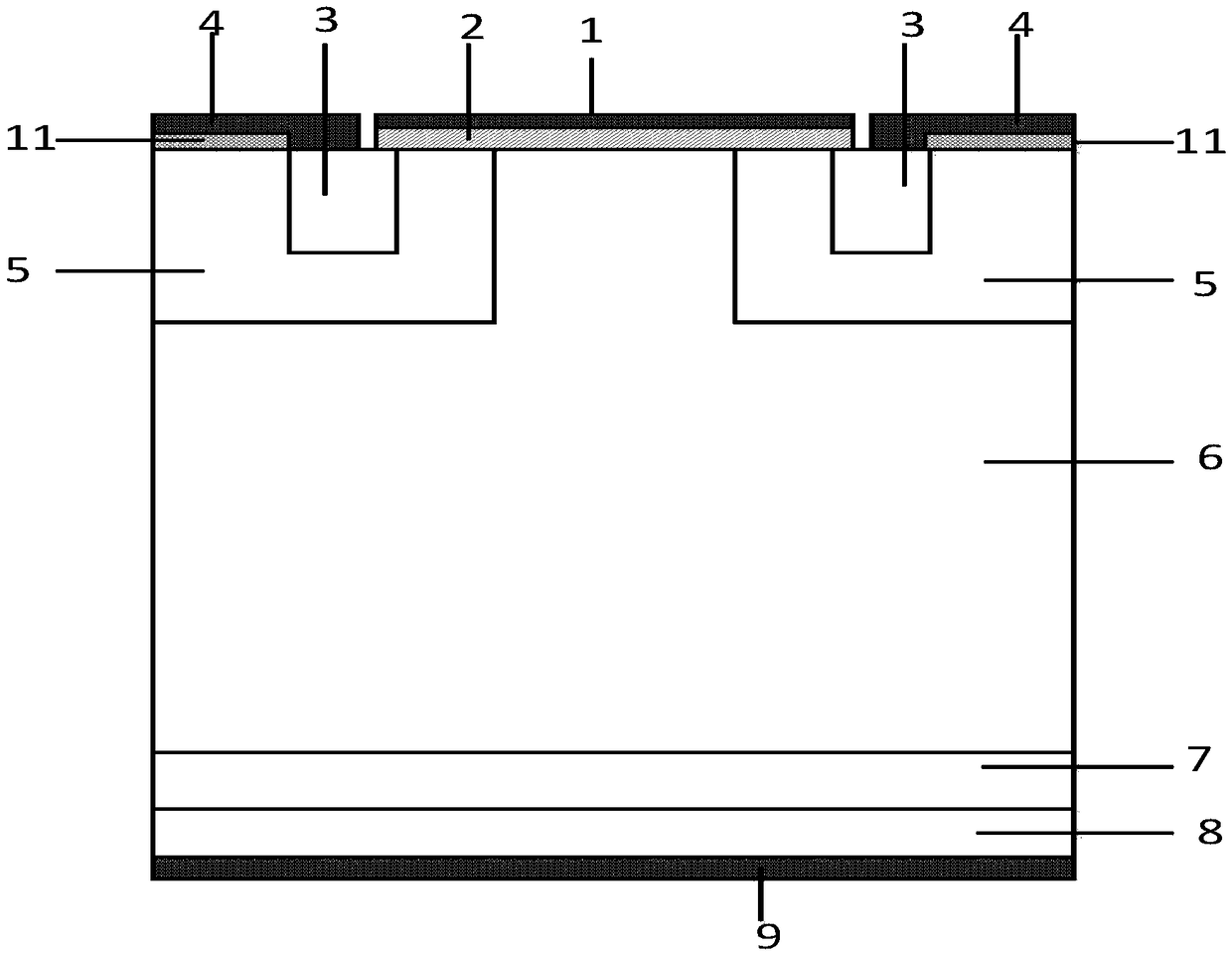A planar insulated gate bipolar transistor and a preparation method thereof
A bipolar transistor, insulated gate technology, used in transistors, semiconductor/solid-state device manufacturing, semiconductor devices, etc., can solve the compromise of increasing forward voltage drop, increasing device drift region, forward voltage drop and turn-off loss characteristics deterioration and other problems, to achieve the effect of reducing the on-voltage drop, optimizing the turn-off loss, and enhancing the conductance modulation effect
- Summary
- Abstract
- Description
- Claims
- Application Information
AI Technical Summary
Problems solved by technology
Method used
Image
Examples
Embodiment 1
[0044] This embodiment provides a silicon carbide planar insulated gate bipolar transistor, including: a metallized collector 9, a P-type collector region 8, an N-type electric field stop layer 7, an N-drift region 6, and a P-type base region 5 , N+ emitter region 3, planar gate structure and emitter metal 4; metallized collector electrode 9 is located on the back of P-type collector region 8, N-type electric field stop layer 7 is located on the front of P-type collector region 8, N-type electric field stop Layer 7 is located on the front of the N-drift region 6; the P-type base region 5 is located on both sides of the top layer of the N-drift region 6; the N+ emitter region 3 is located on the top layer of the P-type base region 5, and is separated from the N-drift region 6 P-type base region 5; the upper surface of the P-type base region 5 between the N+ emitter regions 3 on both sides and part of the upper surface of the N+ emitter region 3 have a planar gate structure; on t...
Embodiment 2
[0050] This embodiment provides a silicon carbide planar insulated gate bipolar silicon carbide transistor, the cell structure of which is as follows Figure 4 As shown, on the basis of Example 1, the P-type silicon layer 11 can also extend to the lower P-type base region 5 to form a trench structure, and the P-type silicon layer 11 is connected to the P-type silicon layer at the bottom and side walls of the trench. The P-type base region 5 and the N-type emitter region 3 form a heterojunction; the trench depth of the P-type silicon layer 11 may be the same as that of the N+ emitter region 3 or may be different.
[0051] Compared with Embodiment 1, this embodiment reduces the parasitic resistance formed in the P-type base region 5, reduces the voltage drop formed by the hole current in the P-type base region 5, and further suppresses the possible dynamic latch of the device. lock, which improves the high current shutdown capability of the device.
Embodiment 3
[0053] This embodiment provides a silicon carbide planar insulated gate bipolar silicon carbide transistor, the cell structure of which is as follows Figure 5 As shown, on the basis of Embodiment 2, the lower part of the P-type silicon layer 11 may also be a heavily doped P-type contact region 12, and the concentration of the P-type contact region 12 is greater than that of the P-type base region 5. concentration; the P-type silicon layer 11 and the P-type contact region 12 form a heterojunction.
[0054] Compared with Example 2, the concentration of the heavily doped P-type contact region 12 is much higher than that of the P-type base region 5, thereby forming a higher hole barrier, which can further increase the potential of the P-type base region and enhance the conductance modulation effect.
PUM
 Login to View More
Login to View More Abstract
Description
Claims
Application Information
 Login to View More
Login to View More - R&D
- Intellectual Property
- Life Sciences
- Materials
- Tech Scout
- Unparalleled Data Quality
- Higher Quality Content
- 60% Fewer Hallucinations
Browse by: Latest US Patents, China's latest patents, Technical Efficacy Thesaurus, Application Domain, Technology Topic, Popular Technical Reports.
© 2025 PatSnap. All rights reserved.Legal|Privacy policy|Modern Slavery Act Transparency Statement|Sitemap|About US| Contact US: help@patsnap.com



